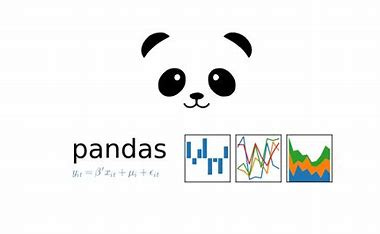Mastering Data Analysis with Pandas: An In-depth Guide
Welcome to this exciting series of articles where we'll embark on a journey to conquer data analysis using the powerful Python library, pandas! Whether you're a complete beginner or looking to brush up your skills, this series will be your comprehensive guide to mastering the art of data wrangling and manipulation.
Part 1: Introduction to Pandas: Your Gateway to Data Analysis in Python
In this introductory article, we dive into the world of Pandas, one of the most powerful and widely-used Python libraries for data manipulation and analysis. We'll start with the basics, exploring what Pandas is, why it's essential for data professionals, and how to install it. Then, we'll walk through the fundamental data structures in Pandas: Series and DataFrame. By the end of this article, you'll have a solid understanding of how to get started with Pandas and leverage its capabilities for your data analysis tasks.
Part 2: Exploring Data with Pandas: Essential Operations and Functions
Building upon our understanding from the previous article, we'll now delve deeper into the core functionalities of Pandas. We'll explore essential operations such as selecting, filtering, and transforming data using Pandas. Additionally, we'll cover key functions for descriptive statistics, handling missing data, and dealing with duplicates.
Part 3 :Advanced Data Analysis with Pandas: Going Beyond the Basics
Now that we've covered the fundamentals, it's time to explore advanced data analysis techniques with Pandas. We'll delve into combining datasets,groupby operations for aggregating and summarizing data, enabling deeper insights into your datasets.
Part 4: Data Wrangling with Pandas: Cleaning and Preparing Your Data
Data is rarely in the perfect form for analysis. In this article, we'll focus on the crucial task of data wrangling using Pandas. We'll learn how to clean messy data, handle outliers, and deal with inconsistent formats. You'll discover techniques for merging and reshaping datasets, essential for combining information from multiple sources. By the end of this article, you'll have the skills to prepare your data effectively for further analysis, ensuring its quality and integrity.
Part 5: Data Visualization with Pandas: Creating Informative Plots and Visualizations
In this final article of our series, we'll focus on data visualization using Pandas in conjunction with other libraries such as Matplotlib and Seaborn. You'll learn how to create various types of plots and visualizations directly from Pandas DataFrames, allowing you to communicate your findings effectively.
By the end of this series, you'll be well-equipped to leverage the full potential of Pandas for your data analysis endeavors.


